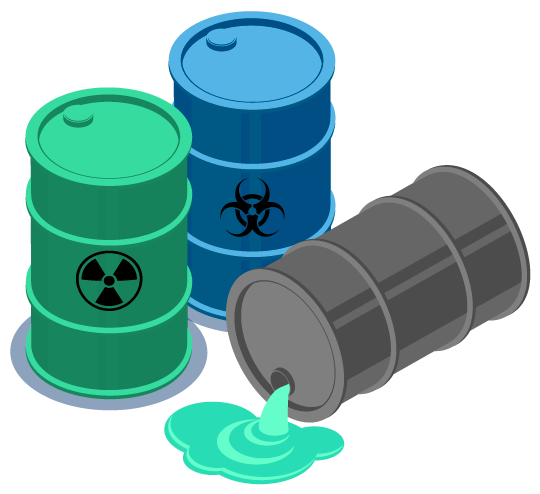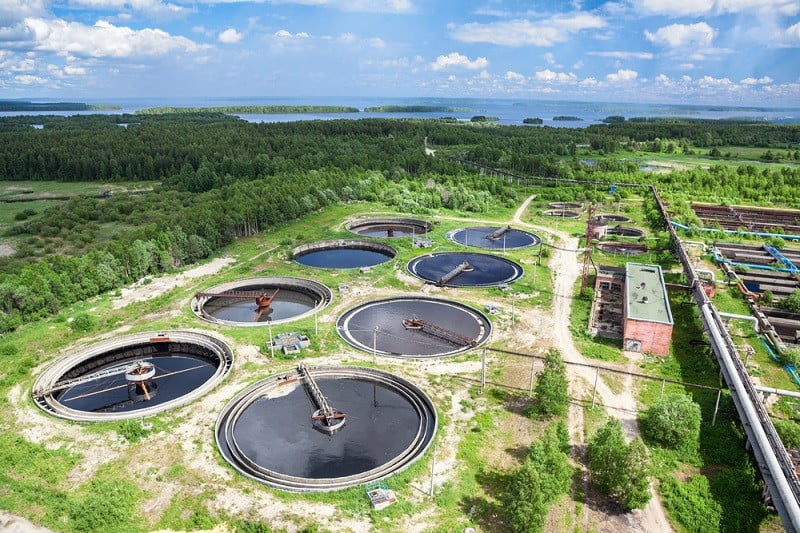Industrial Wastewater Treatment: Personalized Solutions for Complicated Wastewater Challenges
Industrial Wastewater Treatment: Personalized Solutions for Complicated Wastewater Challenges
Blog Article
Recognizing the Comprehensive Refine of Fluid Garbage Disposal: Ideal Practices and Environmental Influence Factors To Consider
The monitoring of fluid waste disposal is a multifaceted issue that requires a comprehensive understanding of different best methods and their associated environmental influences. From the sorts of liquid waste generated to the methods used for collection, treatment, and final disposal, each action plays an important function in protecting environments and public health and wellness. As regulatory standards advance and modern technology developments, the conversation around these procedures ends up being increasingly relevant. What implications do these modifications hold for future sustainability efforts, and just how can stakeholders guarantee that they are properly resolved?
Types of Fluid Waste
Recognizing the different sorts of fluid waste is essential for reliable administration and disposal practices. Liquid waste can be extensively classified into a number of kinds, each requiring special handling and therapy methods.
Industrial fluid waste frequently has unsafe materials, including hefty metals, solvents, and chemicals, created during producing processes. These wastes demand rigorous regulative compliance to protect human wellness and the atmosphere. Residential fluid waste primarily refers to wastewater generated from families, consisting of sewer and greywater, which, although much less toxic, can still posture substantial risks if improperly managed.
Agricultural liquid waste, including overflow from farms, often consists of plant foods and chemicals that can cause ecological destruction if not treated adequately. Clinical liquid waste, generated from healthcare centers, consists of polluted fluids such as bodily fluids and chemicals, calling for specialized disposal approaches to avoid infection and environmental contamination.
Lastly, oil and grease waste, generally created by restaurants and automotive markets, can cause severe obstructions in drain systems if not managed appropriately. Understanding these categories helps with targeted methods for treatment, compliance with policies, and reliable disposal methods, ultimately promoting ecological sustainability and public health safety.

Collection Methods
Reliable collection techniques are critical for the appropriate monitoring of fluid waste, making sure that it is collected securely and efficiently before therapy or disposal. Different strategies are employed depending upon the type of fluid waste generated, the quantity, and the details features of the waste.
One common approach is making use of devoted collection storage tanks or sumps, which are created to catch liquid waste at the source. These systems frequently incorporate pumps that facilitate the transfer of waste to bigger storage space containers or therapy facilities. In addition, mobile collection devices outfitted with vacuum cleaner technology are employed in scenarios where waste is generated periodically or in hard-to-reach areas.
For commercial setups, closed-loop systems can successfully decrease leakages and spills, permitting the healing and reuse of liquid waste. It is also necessary to educate personnel on appropriate collection methods to reduce dangers related to hazardous compounds.
Moreover, applying regular maintenance schedules for collection devices makes sure optimum efficiency and safety and security. The integration of advanced tracking systems can improve collection effectiveness by giving real-time data on waste levels and potential hazards. In general, reliable collection techniques are fundamental to sustainable liquid waste management techniques.
Therapy Processes
Treatment procedures play an essential duty in the monitoring of fluid waste, changing potentially harmful materials into safe effluents or reusable resources - liquid waste disposal. These procedures can be extensively categorized into physical, chemical, and organic approaches, each tailored to deal with particular contaminants existing in the waste stream
Physical therapy techniques, such as sedimentation and filtering, work by removing put on hold solids and particle issue. These strategies are often the initial step in the treatment chain, efficiently decreasing the load on succeeding processes. Chemical treatments entail the use of reagents to neutralize harmful materials, precipitate heavy steels, or oxidize organic pollutants, therefore improving the safety of the effluent.
Organic therapy processes, consisting of activated sludge systems and anaerobic food digestion, profit from the all-natural capabilities of bacteria to weaken raw material. These approaches are especially reliable for Continue wastewater containing eco-friendly toxins. Advanced treatment innovations, such as membrane filtration and advanced oxidation procedures, are increasingly utilized to accomplish greater levels of purification.
Integrating a mix of these treatment methods not only makes sure conformity with regulatory requirements however additionally promotes environmental sustainability by recuperating useful sources from fluid waste.
Disposal Options
How can organizations guarantee the risk-free and liable disposal of fluid waste? Reliable disposal alternatives are vital for guarding public wellness and the setting. The main techniques include land disposal, treatment, and incineration adhered to by discharge right into metropolitan wastewater systems.
Land disposal involves the careful containment of liquid waste in designated garbage dumps, making sure that it does not seep right into surrounding soil or water. Incineration, on the other hand, subjects fluid waste to heats, transforming it into ash and gases, which require proper filtration to minimize emissions. This method is ideal for hazardous wastes that can not be dealt with via standard ways.
In situations where liquid waste can be dealt with, companies may go with chemical or organic therapy processes to neutralize damaging components prior to releasing the treated effluent into municipal systems. This course a fantastic read commonly straightens with regulative requirements, ensuring that the effluent fulfills safety and security requirements.
Ultimately, companies have to perform detailed evaluations of each disposal option to establish its feasibility, thinking about factors such as waste make-up, regulative conformity, and prospective risks to wellness and the atmosphere. By picking proper disposal methods, organizations can contribute to a responsible waste monitoring technique.
Ecological Effect
The environmental influence of liquid garbage disposal is an important consideration for companies looking for to minimize their environmental footprint. Inappropriate disposal techniques can lead to substantial contamination of water sources, dirt deterioration, and damaging impacts on regional environments. For example, dangerous fluids can seep into groundwater, presenting threats to drinking water materials and marine life. Additionally, the discharge of without treatment or inadequately treated waste into surface area waters can cause eutrophication, leading to oxygen exhaustion and the succeeding fatality of fish and various other organisms.

To reduce these effects, organizations need to embrace ideal practices such as implementing rigorous waste treatment processes, advertising recycling and reuse, and sticking to regulatory requirements. By taking a positive approach to liquid waste monitoring, entities can dramatically decrease their environmental impact while supporting sustainable development goals. Eventually, a comprehensive understanding of the ecological influences related to fluid waste disposal is vital for notified decision-making and responsible stewardship of all-natural resources.
Conclusion
Reliable monitoring of fluid waste is vital for securing ecological honesty and public health and wellness. Inevitably, a detailed understanding of fluid waste disposal not just reduces ecological effects but additionally fosters a dedication to accountable source management and ecological stewardship.
The management of fluid waste disposal is a complex issue that needs a detailed understanding of different ideal techniques and their connected environmental effects. From the types of liquid waste produced to the methods employed for collection, therapy, and final disposal, each step plays an important role in guarding environments and public health.The environmental impact of fluid waste disposal is a crucial factor to consider for companies seeking to lessen their ecological footprint. Eventually, a comprehensive understanding of the environmental effects linked with fluid waste disposal is necessary for educated decision-making and accountable stewardship of all-natural resources.
Ultimately, a detailed understanding of fluid waste disposal not only alleviates ecological impacts yet also cultivates a Get More Info commitment to responsible source administration and environmental stewardship.
Report this page